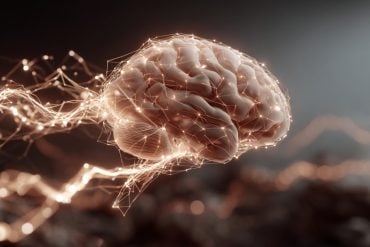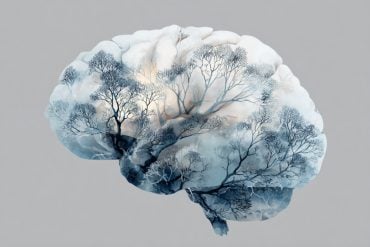Summary: New research shows that 40Hz sensory stimulation (GENUS) improves memory, enhances brain circuit connectivity, and increases new neuron growth in mice modeling Down syndrome. In the study, daily light and sound exposure boosted performance in memory tasks and promoted gene activity linked to synaptic development.
Researchers also found higher expression of genes protecting against aging and Alzheimer’s-like degeneration. While promising, further studies are needed to confirm whether similar benefits occur in humans.
Key Facts:
- Memory Improvement: 40Hz sensory stimulation enhanced short-term memory performance in Down syndrome mouse models.
- Neurogenesis Boost: Stimulated mice showed increased new neuron growth and synaptic connectivity in the hippocampus.
- Alzheimer’s Link: Stimulation helped preserve neurons linked to cognitive resilience against Alzheimer’s pathology.
Source: Picower Institute at MIT
Studies by a growing number of labs have identified neurological health benefits from exposing human volunteers or animal models to light, sound and/or tactile stimulation at the brain’s “gamma” frequency rhythm of 40Hz.
In the latest such research at The Picower Institute for Learning and Memory and Alana Down Syndrome Center at MIT, scientists found that 40Hz sensory stimulation improved cognition and circuit connectivity and encouraged the growth of new neurons in mice genetically engineered to model Down syndrome.

Li-Huei Tsai, Picower Professor at MIT and senior author of the new study in PLOS ONE, said that the results are encouraging but also cautioned that much more work is needed to test whether the method, called GENUS (for Gamma Entrainment Using Sensory Stimulation), could provide clinical benefits for people with Down syndrome.
Her lab has begun a small study with human volunteers at MIT.
“While this work, for the first time, shows beneficial effects of GENUS on Down syndrome using an imperfect mouse model, we need to be cautious as there is not yet data showing whether this also works in humans,” said Tsai, who directs The Picower Institute and The Alana Center, and is a member of MIT’s Brain and Cognitive Sciences faculty.
Still, she said, the newly published article adds evidence that GENUS can promote a broad-based, restorative, “homeostatic” health response in the brain amid a wide variety of pathologies.
Most GENUS studies have addressed Alzheimer’s disease in humans or mice, but others have found benefits from the stimulation for conditions such as “chemo brain,” and stroke.
Down syndrome benefits
In the study, the research team led by postdoc Md Rezaul Islam and former graduate student Brennan Jackson worked with the commonly used “Ts65Dn” Down syndrome mouse model.
The model recapitulates key aspects of the disorder, though it does not exactly mirror the human condition, which is caused by carrying an extra copy of chromosome 21.
In the first set of experiments in the paper the team shows that an hour a day of 40Hz light and sound exposure for three weeks was associated with significant improvements on three standard short-term memory tests—two involving distinguishing novelty from familiarity and one involving spatial navigation.
Because these kinds of memory tasks involve a brain region called the hippocampus, the researchers looked at neural activity there and measured a significant increase in activity indicators among mice that received the GENUS stimulation vs. those that did not.
To better understand how stimulated mice could show improved cognition, the researchers examined whether cells in the hippocampus changed how they express their genes.
To do this, the team used a technique called single cell RNA sequencing, which provided a readout of how nearly 16,000 individual neurons and other cells transcribed their DNA into RNA, a key step in gene expression.
Many of the genes whose expression varied most prominently in neurons between the mice that received stimulation and those that did not were directly related to forming and organizing neural circuit connections called synapses.
To confirm the significance of that finding, the researchers directly examined the hippocampus in stimulated and control mice. They found that in a critical subregion, the dentate gyrus, stimulated mice had significantly more synapses.
Diving deeper
The team not only examined gene expression across individual cells, but also analyzed that data to assess whether there were patterns of coordination across multiple genes. Indeed they found several such “modules” of co-expression.
Some of this evidence further substantiated the idea that 40Hz-stimulated mice made important improvements in synaptic connectivity, but another key finding highlighted a role for TCF4, a key regulator of gene transcription needed for generating new neurons, or “neurogenesis.”
The team’s analysis of genetic data suggested that TCF4 is underexpressed in Down syndrome mice but the researchers saw improved TCF4 expression in GENUS-stimulated mice.
When the researchers went to the lab bench to determine whether the mice also exhibited a difference in neurogenesis, they found direct evidence that stimulated mice exhibited more than unstimulated mice in the dentate gyrus.
These increases in TCF4 expression and neurogenesis are only correlational, the researchers noted, but they hypothesize that the increase in new neurons likely helps explain at least some of the increase in new synapses and improved short term memory function.
“The increased putative functional synapses in the dentate gyrus is likely related to the increased adult neurogenesis observed in the Down syndrome mice following GENUS treatment,” Islam said.
This study is the first to document that GENUS is associated with increased neurogenesis.
The analysis of gene expression modules also yielded other key insights. One is that a cluster of genes whose expression typically declines with normal aging and in Alzheimer’s disease, remained at higher expression levels among mice who received 40Hz sensory stimulation.
And the researchers also found evidence that mice that received stimulation retained more cells in the hippocampus that express Reelin. Reelin-expressing neurons are especially vulnerable in Alzheimer’s disease, but expression of the protein is associated with cognitive resilience amid Alzheimer’s disease pathology, which Ts65Dn mice develop. About 90 percent of people with Down syndrome develop Alzheimer’s disease, typically after the age of 40.
“In this study, we found that GENUS enhances the percentage of Reln+ neurons in hippocampus of a mouse model of Down syndrome, suggesting that GENUS may promote cognitive resilience,” Islam said.
Taken together with other studies, Tsai and Islam said, the new results add evidence that GENUS helps to stimulate the brain at the cellular and molecular level to mount a homeostatic response to aberrations caused by disease pathology, be it neurodegeneration in Alzheimer’s, demyelination in chemo brain, or deficits of neurogenesis in Down syndrome.
But the authors also cautioned that the study had limits. Not only is the Ts65Dn model an imperfect reflection of human Down syndrome, but also the mice used were all male. Moreover, the cognitive tests in the study only measured short-term memory.
And finally, while the study was novel for extensively examining gene expression in the hippocampus amid GENUS stimulation, it did not look at changes in other cognitively critical brain regions such as the prefrontal cortex.
In addition to Jackson, Islam and Tsai, the paper’s other authors are Maeesha Tasnim Naomi, Brooke Schatz, Noah Tan, Mitchell Murdock, Dong Shin Park, Daniela Rodrigues Amorim, Fred Jiang, S. Sebastian Pineda, Chinnakkaruppan Adaikkan, Vanesa Fernandez, Ute Geigenmuller, Rosalind Mott Firenze, Manolis Kellis and Ed Boyden.
Funding for the study came from the Alana Down Syndrome Center at MIT and the Alana USA Foundation, the National Science Foundation, the “la Caixa” Banking Foundation, an EMBO long term postdoctoral fellowship, Barbara J. Weedon, Henry E. Singleton, and the Hubolow family.
About this brain stimulation and Down syndrome research news
Author: David Orenstein
Source: Picower Institute at MIT
Contact: David Orenstein – Picower Institute at MIT
Image: The image is credited to Neuroscience News
Original Research: Open access.
“Multisensory gamma stimulation enhances adult neurogenesis and improves cognitive function in male mice with Down Syndrome” by Li-Huei Tsai et al. PLOS One
Abstract
Multisensory gamma stimulation enhances adult neurogenesis and improves cognitive function in male mice with Down Syndrome
Down syndrome (DS) has been linked with impaired neurogenesis and aberrant synaptic functions in the hippocampus. These changes are consistent with the reported deficits in memory and other cognitive tasks in individuals with DS.
Additionally, a recent study found dementia to be associated with mortality in 70% of older adults with DS.
However, there are currently limited therapeutic options available to manage cognitive performance in individuals with DS.
We have previously reported the utility of using sensory stimulation presented at gamma frequency for combating cognitive decline in mouse and human subjects.
The sensory gamma stimulation reduced Alzheimer’s disease (AD) related pathology, improved neuronal survival and synaptic density, and enhanced cognitive function in multiple mouse models of AD.
In a more recent literature, we showed that the reduced pathology was specifically observed at 40 Hz stimulation but not at 8 or 80 Hz stimulation.
Others have also reported the beneficial effects associated with gamma stimulation in AD as well as in other neurological diseases such as Parkinson´s disease.
However, the efficacy of sensory gamma stimulation at 40Hz has not been tested in DS.
The Ts65Dn mouse, the most widely used model of DS, contains an extra chromosome spanning most of the distal region of mouse chromosome 16 homologous to human chromosome 21.
This murine model recapitulates phenotypes present in individuals with DS including synaptic abnormalities and deficits in hippocampal-dependent spatial learning and memory.
As such, this murine model provides invaluable opportunities for exploring and testing potential therapeutic interventions for cognitive deficits in DS.
Here, we used this well-characterized DS mouse model to test the effects of sensory gamma stimulation on cognitive benefits within the DS model and observed that this treatment improved cognitive function, enhanced adult neurogenesis, and induced expression changes in genes involved in synaptic organization.






